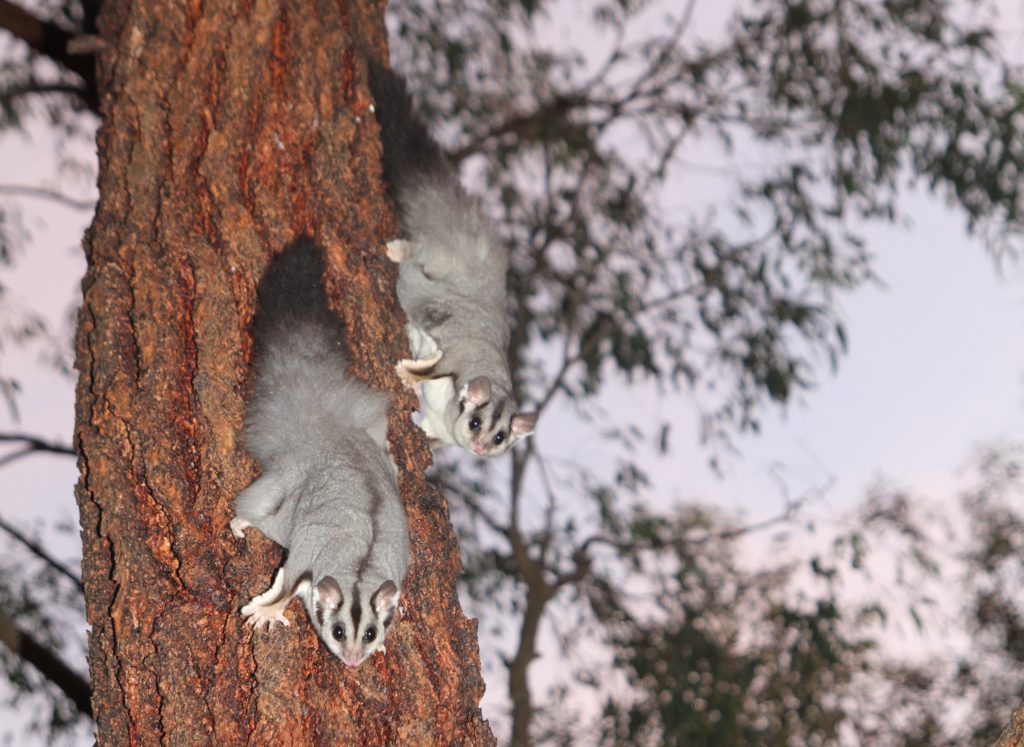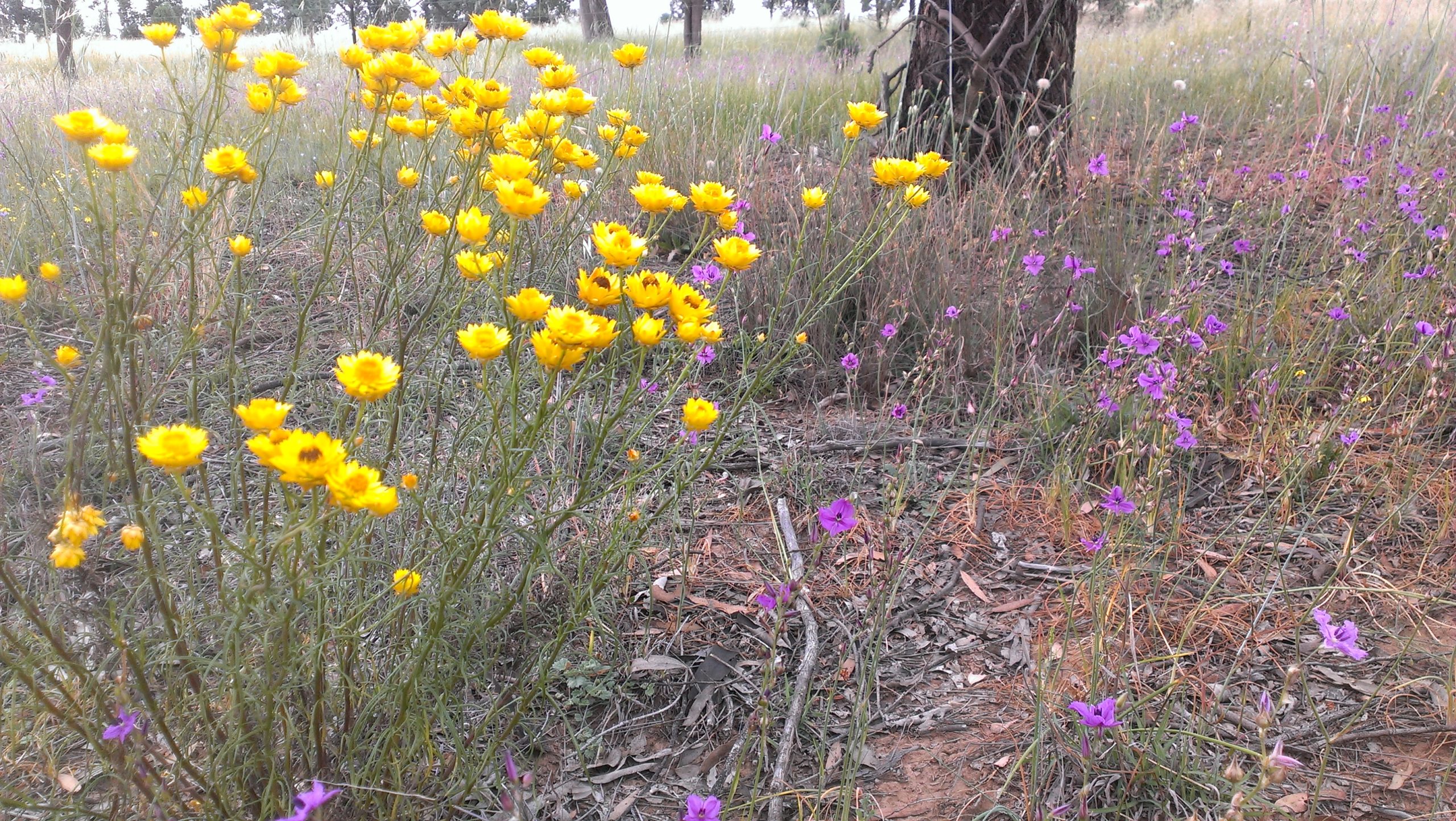
There is a dark stripe from between the eyes to the mid-back, and the tail is soft and bushy averaging about 27 cm in length. Distinct in appearance and vulnerable in habitat, Squirrel Gliders are some of Australia’s smaller residents.
In the small town of Burrumbuttock, in the central southern part of the Riverina region, Landcare and community groups have been busy advocating, preserving and enhancing their natural habitat to ensure that future generations, both of the human and glider variety, are here to enjoy it.
Naturally, their homes of choice are tree hollows in 100 year old eucalyptus where they can hide in the dark until evening falls and then come out to feed on insects, flowers and tree sap.
The Burrumbuttock Squirrel Glider Local Area Management Plan (LAMP) Project aims to double the glider population at Burrumbuttock to 1,000, but at a starting number of 555 it’s a long road.
“This project has been going for 20 years. Squirrel gliders are hollow dependant but hollows only start forming when trees are over 100 years old and a nesting pair can use up to 30 hollows across their home range. They move around a lot to match where available food is at different times of year, weather, avoid different predators,” says Regional Landcare Coordinator for the Murray Region, Paula Sheehan.
“The trees we planted may be 80 years away from being homes for the gliders, but we are 20 years closer than if we had not started. In the meantime, they will be a food source and help the gliders move about their range.
Support from private landholders and the wider community is essential for the longevity of the project, Paula says.
“So far we have 41 landholders who have committed to supporting the project on their properties with more on the waiting list. Their support is crucial in ensuring the long-term viability of the species.
“Projects such as these are about supporting and developing biodiversity. It’s not as simple as putting some trees in and waiting. It is so much more than that. We are not just supporting gliders, we are supporting trees, grasslands, lizards, birds, insects and the farmers themselves. It’s all part of a much bigger picture,” said Paula.
Local Landcare Coordinator for Mid Lachlan Landcare Tracee Burke agrees, saying projects that groups develop are not just about one specific species. They are about supporting and protecting biodiversity across all landscapes.
“The collaborative role Mid Lachlan Landcare and private landholders have in the Box Gum Grassy Woodland Habitat on Farm project is crucial. We are working together to create bio-diverse, healthy farms that protect and enhance this woodland.
“We are working with landholders to find the best way to maintain the remaining trees, encourage natural regeneration, provide connectivity and plant new species if required.”
With less than 10% of its pre-European distribution intact, the open woodland trees are listed as critically endangered both at a state and nationwide level. With their range spanning from Queensland to Victoria, it’s a big task.
“The trees are just one component in the biodiversity of the surrounding areas. With them comes shrubs, grasses, native herbs and with that comes mammals such as the Squirrel Glider, birds such as the Superb Parrot, reptiles and frogs. These all work alongside one another and need to be protected. By doing one, you are supporting the other and we are always thinking of both,” Tracee said.
Images produced with permission.
‘Squirrel Gliders’ Lou Bull – Petaurus Education Group Project Officer
‘Box Gum Grassy Woodland’ – Local Landcare Coordinator Tracee Burke – Mid Lachlan Landcare
To find out more:
Samantha Stratton – Landcare NSW
